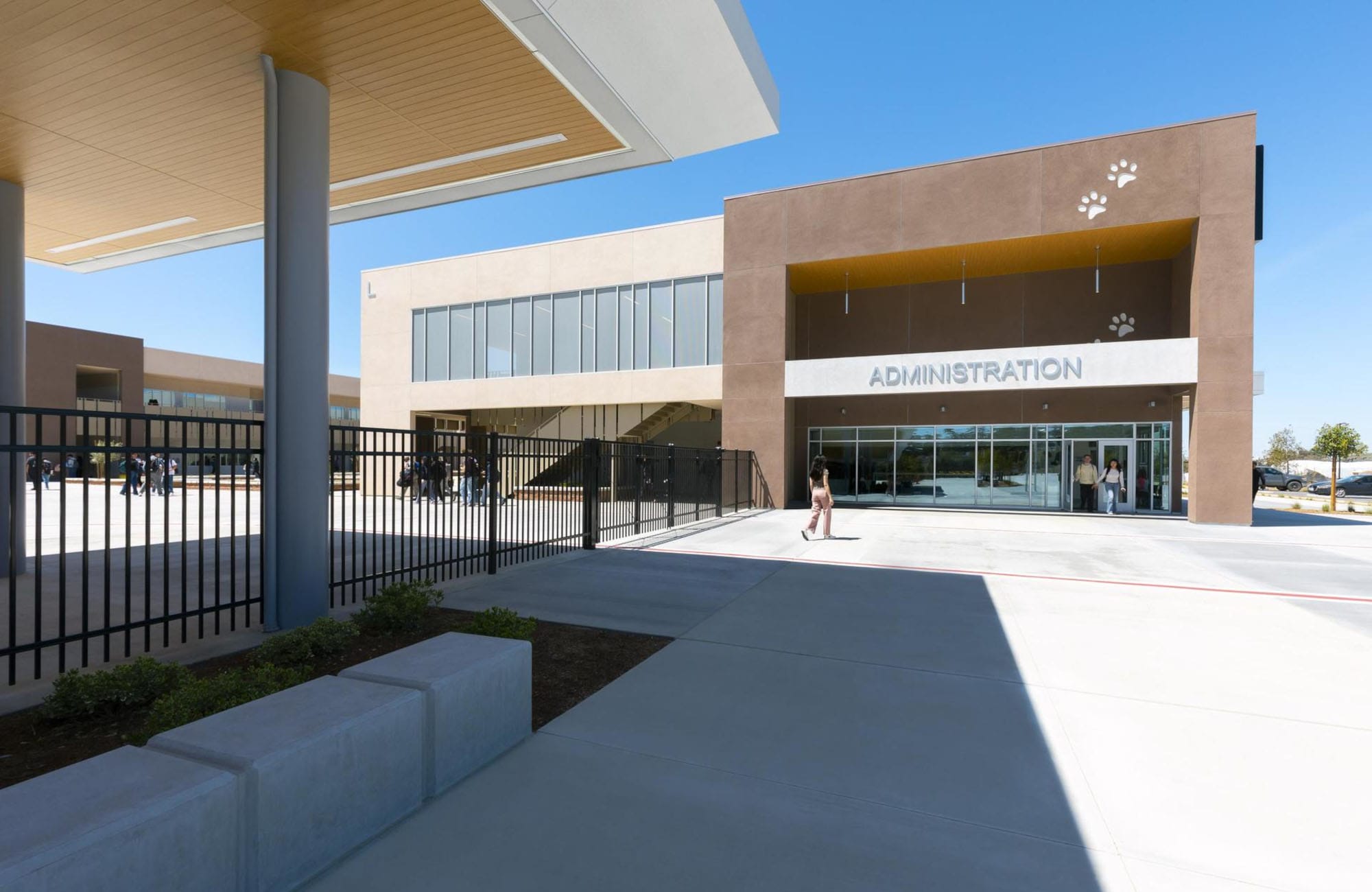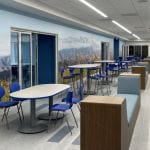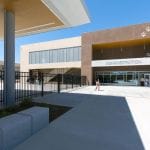Beaumont Unified School District- Beaumont High School Expansion
Company: Silver Creek Modular
Location: Beaumont, CA, USA
Gross Size of Project: 59, 722 Square Feet
Days to Complete: 526
Award Criteria
Architectural Excellence
A design assist project approach was utilized on this project to allow the design architect and the modular building design team to collaborate on design considerations during the conceptual phase of the project which ensured that the modular construction systems selected would support the design intent. The project consists of two separate modular buildings which are each approximately 30,000 GSF. When combined the buildings contains 30 standard classrooms, 4 science laboratories, 2 medical training classrooms, 2 robotics classrooms, 2 multipurpose/collaboration
spaces, a full administrative wing and support spaces. The buildings’ exterior features multicolored stucco finishes, perforated aluminum screen walls and large glazing system. The buildings’ interior features abundant natural light in every educational space, custom wall graphics and custom wood paneling. The completed project reflects the coordinated efforts of all team members to provide a design focused experience.
Technical Innovation & Sustainability
To meet the project requirements a series of project specific module designs were utilized. The 12’-0” wide modules varied in length up to 48’-0”and the heights varied up to 14’-10”. The buildings feature 26’ tall breezeways at several locations which use specialized modules without a diaphragm at the 2nd level to create the open volume. A light weight concrete floor system was poured the in the factory for all modules. High efficiency LED lights with occupancy sensing controls and automatic daylighting
controls were used in all spaces. Dimming controls were provided in all classrooms to allow the teachers to adjust the light levels for specific learning exercises. Wall assemblies separating classrooms and adjacent spaces were designed to provide acoustic separation. Low-VOC materials were used throughout the project to provide a healthy learning environment. High efficiency VRF space conditioning systems were utilized with a dedicated outside air ventilation system.
Cost Effectiveness
The project owner recognized early in their planning process that modular construction was the most cost-effective construction method for their campus expansion project. By utilizing off-site construction, they were also able to realize significant schedule advantages as compared to traditional construction methods. During the design process the interior spaces were carefully planned to maximize the work that could be performed in the factory wherever possible. Where possible the restroom facilities were designed and located to be fully contained within a module to allow those spaces to be completed in the factory.
See More Awards of Distinction Winners
To view all our current honorees, visit our main Awards page.





